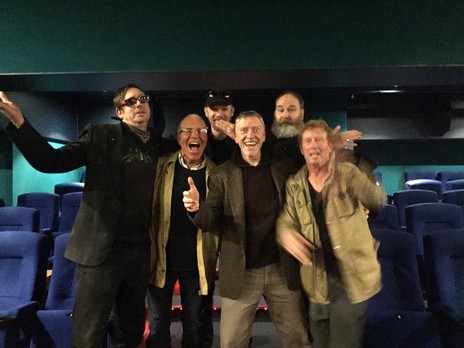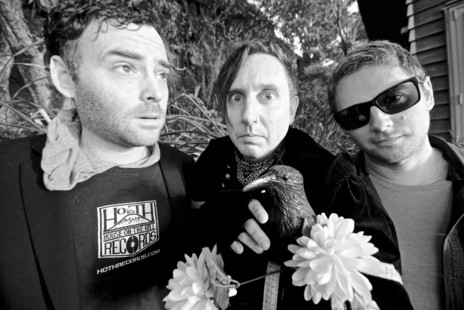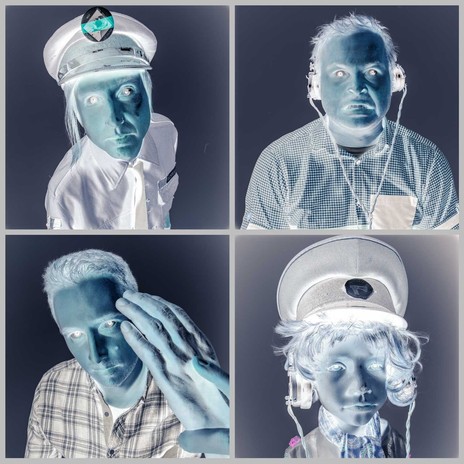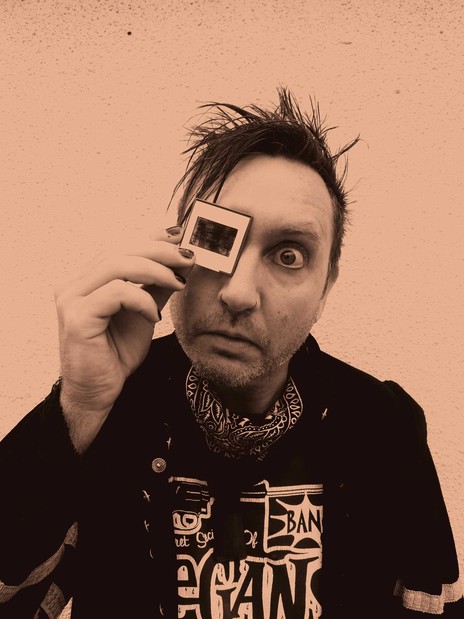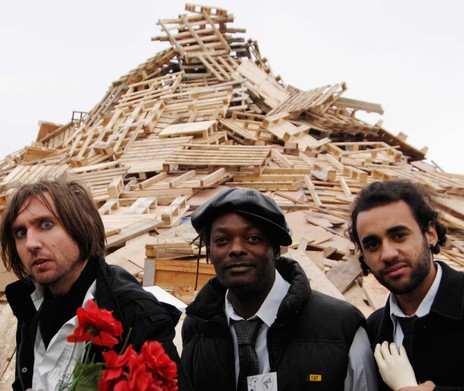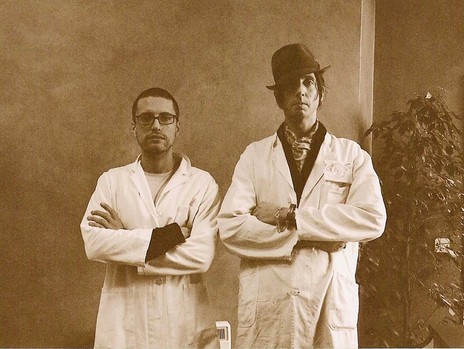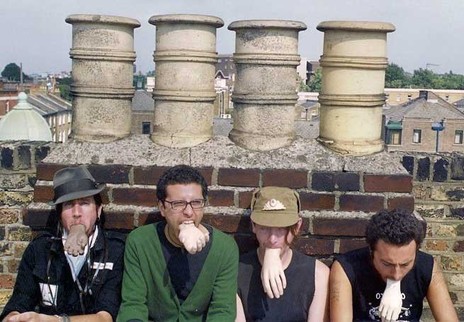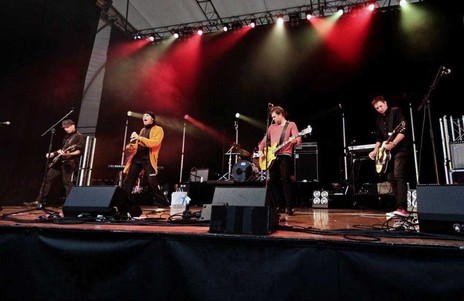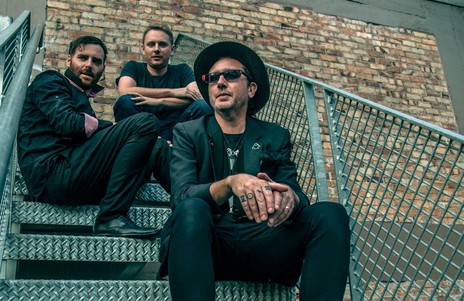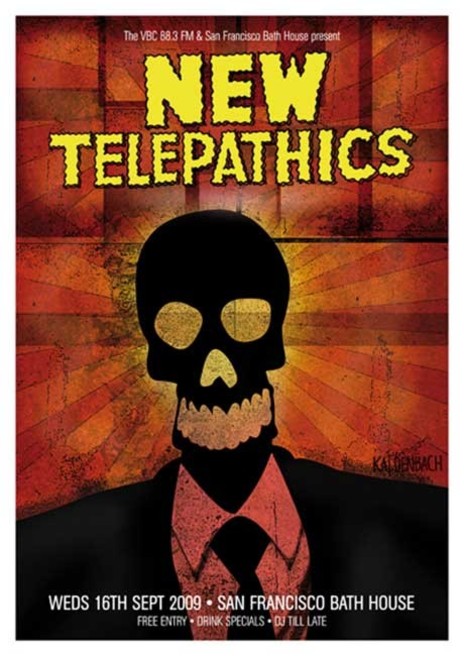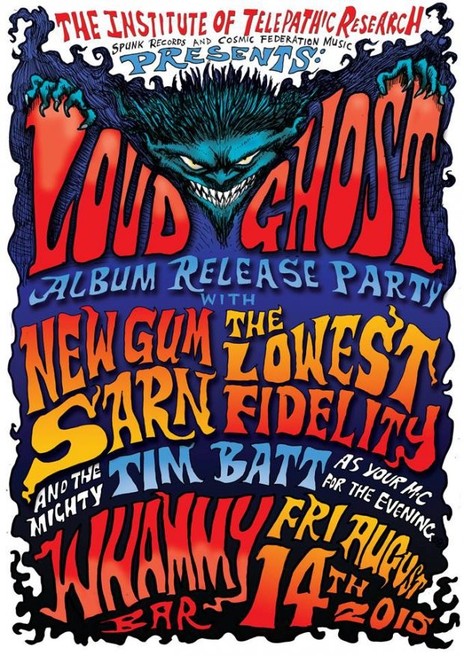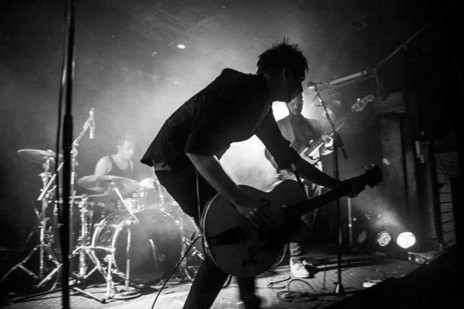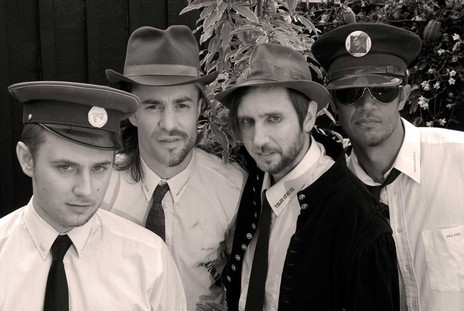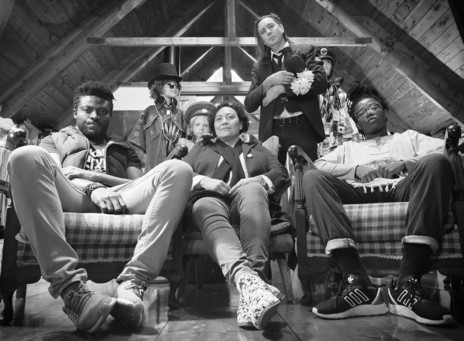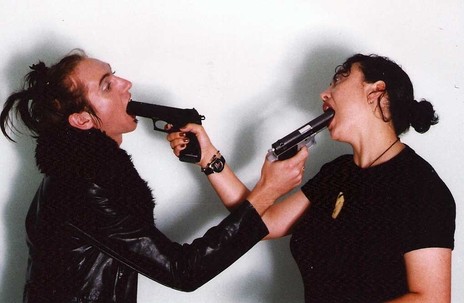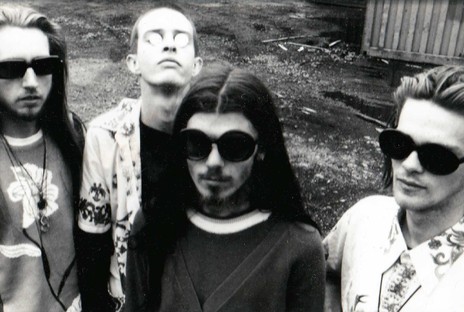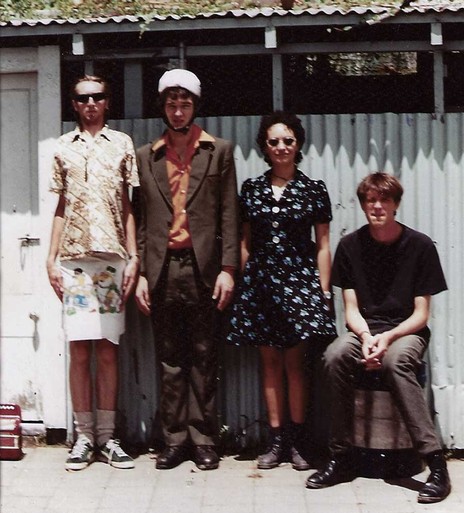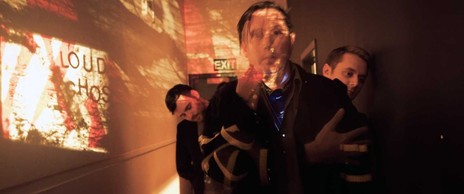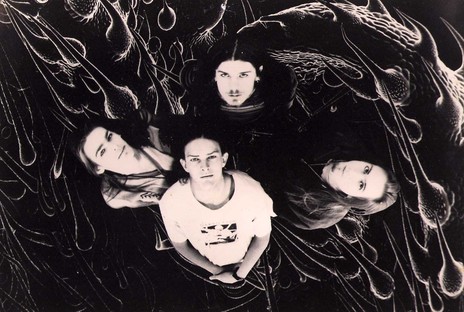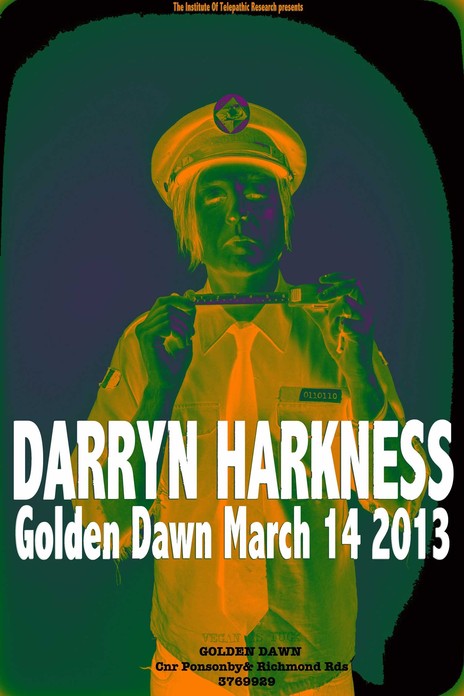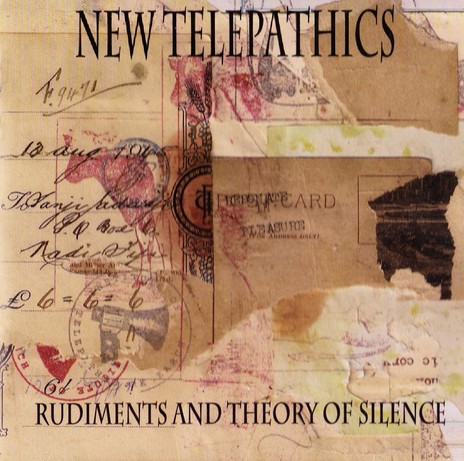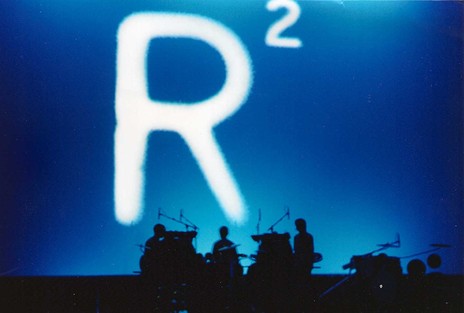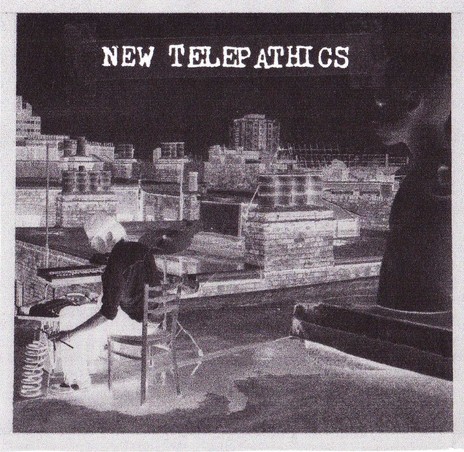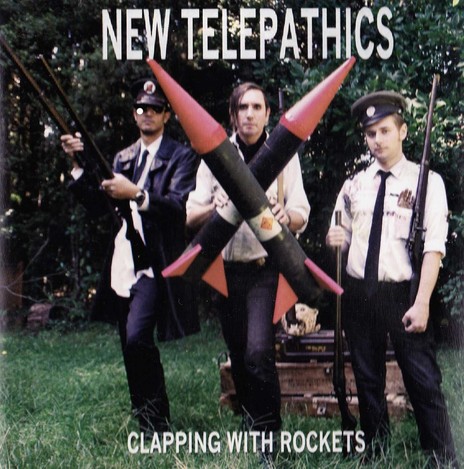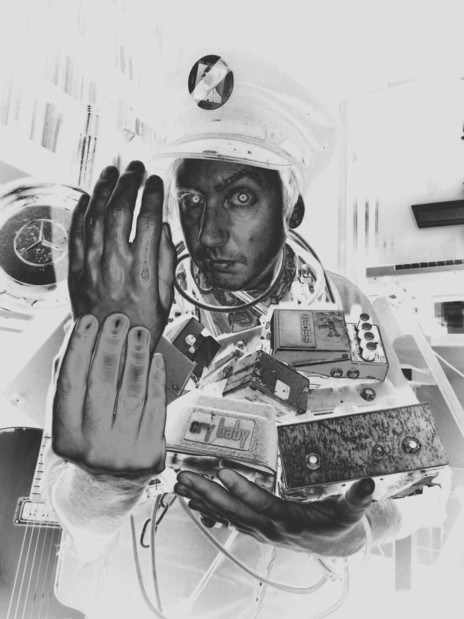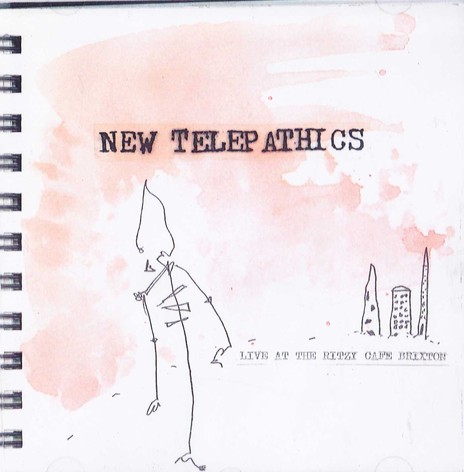The Darryn Harkness story includes stints with renowned percussion ensemble From Scratch, time with the Dead Flowers, Fagan and the People, Hallelujah Picassos and a period in London that included a John Peel session and few heady years with Serafin, a British band that came within a heartbeat of the really big time. In between all this falls one of his most lucrative projects, a long and ongoing relationship with the classic silent film, FW Murnau’s Nosferatu.
Darryn Harkness was born 3 May 1972 in the South Island town of Gore to parents Ian and Carolyn Harkness, who met in 1969 while performing with Palmerston North cabaret act The Flairs Showband.
It was a childhood of cabaret, musical theatre, sing-along parties around the piano and travelling with his parents to gigs. Ian and Carolyn performed as a duo, providing background music for restaurants and hotels. Darryn describes it as being a classy duo of standards like ‘Girl from Ipanema’ and ‘Summertime’, describing his father as a “fantastic pianist” and his mother as “an amazing singer.”
Darryn: “We have always made music as a family and share a collective talent for improvising and creating original music. The first of our branch of the Harkness family arrived in NZ in 1842 and played violin and accordion for his fellow travellers without respite during the voyage from Scotland. When he ran out of known tunes, he improvised; it’s all in the ships logbooks. Music is important to the family, it is our heartbeat.”
By age 12 Darryn was already a handy pianist but was bored with the instrument and was teaching himself drums, looking for a certain “musical something” he could not quite put his finger on. Everything changed when he got to know his uncle, Ian’s younger brother Ross.
“There wasn’t much rock music in our record collection, my Dad didn’t get Hendrix or The Who. Fortunately that all changed with Ross.”
Ross Harkness lived in Palmerston North and played in Foisemaster, a band Darryn describes “as a dirty Palmy low-fi punk sludge band.”
“Ross sat me down when I was 12 and played me music like Beefheart’s Trout Mask Replica, Can’s Tago Mago, Ornette Coleman and The Cramps. This music filled the empty musical space in my psyche. Ross introduced me to pot, beer, punk and most importantly Sun Ra [Darryn’s most important and enduring influence].”
So close were uncle and nephew that they started making music whenever they got together. They named their ongoing project Dwellers of the Temple Headlands and have so far made two CDs of their recordings, music which Darryn counts among his favourite creative endeavours.
By the mid-1980s the family were living on North Shore Auckland’s (after sojourns in Timaru, Gore and Christchurch) and Darryn found himself at Westlake Boys’, a school with a remarkable musical alumni that includes Andrew McLennan, Peter Warren and Don McGlashan, and where he became involved in his first band, Fourpeace. In 1988 the band made the finals of the very first 91FM High School Battle of the Bands.
“My parents were really great, and while they did not ‘get’ the music I was making, they let us practise at home and never begrudged the noise or the beer. The only thing they had to say about it was never do it for a living.”
It was advice Darryn was never going to take. He left school aged 17 with one ambition, to make music. He enrolled to study sound engineering with SAE (School of Audio Engineering) on the institute’s opening day in 1990.
Institutions, he quickly realised, were not for him and he left after a year. “On reflection, I would have been better off using the money I spent to study at SAE buying some equipment and teaching myself while making music.” The music in question was Darryn’s first post-school band, Braintree.
“Braintree was a good time and my first really good band. Loose, big and bold and not afraid to experiment, the band was a hotbed of creative activity that included a couple of ultra experimental sub-bands, The Mysterons and Stayfree-Carefree. The early 1990s were an excellent time to be a musician. Getting on the dole was normal for rock and roll artists and I spent all my time making music which suited me perfectly.”
Back in Auckland, Darryn had also formed Spacesuit with Sandy Mill, Ben Holmes and Gabriel White, which was gaining momentum.
In 1993, with a $5000 grant from the QEII Arts Council, Braintree recorded and released an EP on the Wildside label called Minds Alive. It “didn’t sell very well” and in 1995 “the band fell apart, as bands do.”
With the demise of his beloved Braintree, Darryn started going to Palmerston North to hang with Ross and discovered The Stomach, an 8-track recording studio that charged beneficiaries $10 an hour under a local arts scheme. The Stomach became his second home. It was there that Stayfree-Carefree recorded the Telepathic Junkie LP, a limited edition vinyl release, and where Darryn, under the moniker DHarkness, recorded his first solo project, a 7” EP called Time Machine.
Back in Auckland, Darryn had also formed Spacesuit with Sandy Mill, Ben Holmes and Gabriel White, which was gaining momentum. In 1997 the band released its debut CD album, the self-titled Spacesuit.
“Spacesuit pushed the boundaries as much as our skills would allow us and though we were pretty out there a lot people really latched onto our scene at Kurtz Lounge on upper Symonds Street, where we became something of a phenomenon, packing out the place every time we played.”
Fellow Spacesuit member Gabriel White pointed Darryn in the direction of legendary percussion ensemble From Scratch, who were auditioning for a new member in preparation for a European tour. Dubious, he went along anyway and to his surprise was offered the position, one that he held from 1996 until 2000. The rehearsals for the tour took six months and in 1997 he headed offshore to Indonesia for the first time followed by Europe in 1998. It was a gruelling tour that included the recording of the album Global Hockets.
The band took a three-month break halfway through their schedule, giving Darryn an opportunity to visit London. He was there barely a week when he met musician Ben Smith at a party. Ben was the leader of a rising pop-rock band called Stony Sleep, and liking what he saw in Darryn, invited him to jam with the band the next day.
“We jammed on four songs and Ben said that in a couple of days they were going to do a John Peel session and asked would I like to play these four tracks? I didn’t get to meet John Peel but playing in the Maida Vale BBC studio was an amazing experience.”
There was some talk of Darryn joining Stony Sleep but with From Scratch reconvening in Germany in a couple of months the timing wasn’t right. In the meantime Darryn was scheduled to return to New Zealand to play bass on the Dead Flowers tour in support of the new album they had recorded together for Wildside Records.
While in Europe, he took the opportunity to record a track under the name New Telepathics, a solo project that he describes as “a mixture of jazz, electronica and the avant-garde.” The track, ‘All About The Eye’, appeared on Mikey Havoc’s 1999 Sony compilation, Mr Havoc’s Magic Set.
With the Dead Flowers assignment complete, he headed back to Europe, finished the From Scratch tour and headed back to London to meet up with Ben Smith who was at a loose end, Stony Sleep having fallen apart while Darryn was in NZ. The pair started jamming and a new band was born, the Brit-rock orientated Serafin. The buzz was immediate and in 1999 Serafin won the NME People's Sound Competition, which gave them a spot at the V-Festival.
Serafin signed a licensing deal with Taste Media, whose portfolio included Muse. They played the Brixton Academy with Muse in 2001 and in 2002 released two EPs, EP1 and EP2. The video for a single, ‘Things Fall Apart’, became a huge hit on MTV Europe and following an appearance at the SXSW (South By Southwest) festival in Austin, Texas later that year, they were signed by Elektra Records and advanced £200,000. They set to work recording an album with Dave Sardy (Marilyn Manson, Oasis, Red Hot Chili Peppers) in Los Angeles.
Elektra decided against an American release for No Push Collide but set it loose in Europe in 2003 to rave reviews. Sales were healthy but nowhere more so than in France where the band, championed by the French music press, became a major touring act.
The next two years saw the band busy playing on the European festival circuit, culminating with consecutive spots at the Reading and Leeds Festivals.
“I remember the first time we played Paris,” says Darryn. “The tour bus pulled up outside the venue, a 500 seater, and there was a huge crowd of people milling around. We wondered what was going on. It turns out they were there to greet us. We were surprised to say the least.”
By the time of their second French tour, they band were playing to 2,000 seat venues. The next two years saw the band busy playing on the European festival circuit, culminating with consecutive spots at the Reading and Leeds Festivals and a two month tour support slot opening for Frank Black.
They were heady times but sadly, they didn’t last. Problems arose when their label Taste Media was sold to Warner Music in 2004. The band, as many do in this situation, found itself in contractual limbo and unable to operate as a going concern. Visa difficulties for Darryn added further weight to the band’s problems and despite one more album, 2007’s To The Teeth, the moment was lost.
With Serafin in hiatus, Darryn focused on his New Telepathics project and began gigging around London, quietly building an audience. Visa requirements meant he had to leave the country every three months, so he regularly disembarked to Germany where he kept a flat and operated a slightly different version of New Telepathics.
“I was living and playing in the district around the Bauhaus in Weimar, a revelatory experience in design but the music scene was very ordinary and the locals had never seen anything like New Telepathics before. Every time we played clubs in the area the crowds were so large they would spill out onto the street. It was crazy.”
New Telepathics opened doors in Germany for Darryn and he was given the opportunity to fulfill another of his ambitions, to exhibit as an installation artist. Combining sculptural art, music and zines, the shows drew solid crowds, further enhancing his stature within the city’s art and music scene.
Between 2004 and 2010 New Telepathics released 11 albums and EPs (variously on CD, vinyl and cassette) but Darryn’s biggest success during his post-Serafin years was with FW Murnau’s Nosferatu.
“I had a squat in Brixton for nearly 10 years, that was my base and we often played the Brixton Cinema Café with New Telepathics. One day I approached them with this idea I had about live scoring FW Murnau’s classic silent film Nosferatu.
“They agreed and I did the gig with a keyboard and a bowed guitar in the main theatre. Over 300 people turned up and my share of the door was one thousand, three hundred pounds. It was so well received that they invited me to do it again.”
With the help of The Future Cinema Club of the UK, the word spread and he performed it at the Edinburgh Festival in front of an audience of 900 with Dresden Dolls opening up. In 2007 Darryn undertook a 16-date tour of UK cinemas and in 2009 he brought his Nosferatu to the Auckland Festival, bringing his European sojourn to an end.
In 2009 tracks by New Telepathics were licensed to TV drama Outrageous Fortune and he signed to Mushroom Publishing later that year. That same year he was invited to join Fagan and the People and played on their album Admiral Of The Narrow Seas. In 2011 he joined Hallelujah Picassos and featured on the band’s 2012 EP, The Bullet That Breaks The Key.
In 2010 he released a New Telepathics album, Clapping With Rockets. Reviewer Graham Reid suggested that it should have been two LPs, one rock orientated and the other more avant-garde. This set Darryn to thinking and a year or two later Loud Ghost was born; a separate entity to New Telepathics and one dedicated to his rock orientated inclinations.
The first Loud Ghost album was released in 2015 to rave reviews and the project looks set to become a permanent fixture on Darryn’s calendar.
With new projects from New Telepathics, Tofu Horse and Hallelujah Picassos underway and a bevy of video and zine productions in the works, plus being as integral part of the improv community through “Vitamin S”, the Darryn Harkness story rolls on in its own inimitable way.
“I am both a songwriter and avant-garde musician,” says Darryn, “an artist who enjoys the idea of bringing those two incongruent ends of the universe together. People tend to not really know how to pigeonhole me. I like the idea of a good pop song, but I also like to shake things round a bit to blur any boundaries that may be there with genre. Ultimately I think the role of an artist is to protest the suffering and celebrate the joy and our music should reflect that.”
